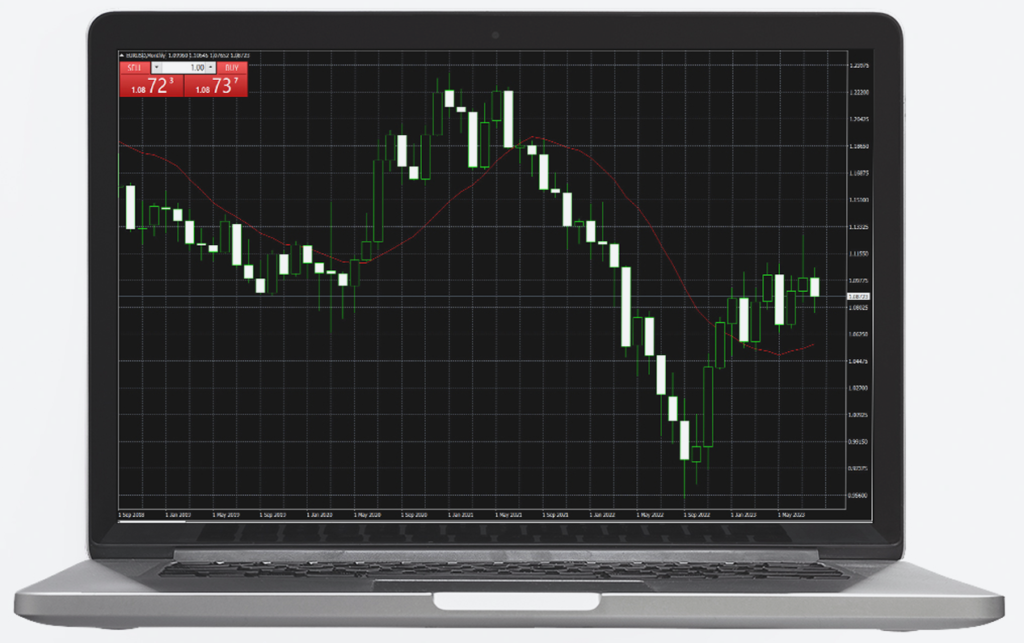Is CFD Trading Right for You?
Determining whether a contract for difference (CFD) suits your trading goals can be challenging, as different strategies require unique approaches. So, what exactly is CFD trading, and how does it work? Read on to find out.
Maximum leverage 1:500
99.35% of orders achieve ultra-fast execution < 13ms
T+0 Speed Withdrawal
Tradable financial products 100+
Understanding CFDs in Trading

Why Consider Trading CFDs?
CFDs offer several key advantages over other markets, including:

Low Transaction Costs
Whether CFD trading aligns with your goals depends on your specific aims and strategies:

High Leverage
Traders can place large bids without needing to provide the total upfront cost, offering greater market exposure.

Market Volatility
High volatility markets, like currency pairs, attract traders due to the potential for greater profits.

24/5 Market Access
CFDs operate continuously five days a week, allowing the market to absorb news and events with fewer trading "gaps".

Automated Trading
CFDs uniquely allow retail investors to employ automated trading strategies, saving time and effort.
Choosing a CFD Trading Strategy
Whether CFD trading aligns with your goals depends on your specific aims and strategies:
For Beginner Traders
For Share Traders
For Forex Traders
CFDs might appeal due to their simplicity and low investment requirements. However, beginners should gain experience before risking capital, as CFDs can be more complex than they initially appear.
Share traders can use CFDs to take stock market positions without purchasing actual shares. This flexibility allows for profit opportunities in both rising and falling markets.
Forex traders often use CFDs as a gateway to the foreign exchange market, speculating on price movements without exchanging currencies directly. CFDs also provide flexibility and leverage, making them a popular choice in this market.
CFDs can also be applied across various markets, including precious metals and oil trading.
Why choose WisunoFX as your trading platform?

Advanced Trading Platform – MetaTrader 4 (MT4)
Recognized as the most popular trading platform in the market, MetaTrader 4 (MT4) offers a powerful and flexible trading environment for both beginners and advanced traders. With its user-friendly interface, MT4 supports automated trading through Expert Advisors (EAs), allowing for seamless execution of strategies even when you’re away from your screen. Enjoy a variety of order types, advanced charting tools, and analytical functions to maximize your trading efficiency and control.

Stay Ahead with Real-Time Market Updates
Keep your finger on the pulse of the market with our up-to-date economic calendar, comprehensive trading blogs, and the latest market news. Whether you're planning your next move or refining your strategies, our real-time updates ensure you’re always informed about key events and trends that can impact your trades. Never miss an opportunity to stay ahead of the game!

Technical Analysis for Smarter Trading Decisions
Stay alert to the best trading opportunities across financial instruments with comprehensive technical analysis for traders. By understanding key indicators and chart patterns, you'll know exactly where your entry points are and, more importantly, why you should make those moves. Make informed decisions with the power of data-backed insights.

Risk-Free Trading with a 0-Risk Demo Account
Perfect your strategies with 0-risk demo account! Our demo account lets you dive into the market using virtual money, giving you a hands-on experience of real trading conditions. It’s the perfect way to build your confidence and refine your skills before you transition to live trading.

FREQUENTLY ASKED QUESTIONS
CFD (Contract for Difference) trading involves speculating on the price movements of financial assets without owning the underlying assets. Traders enter into contracts with brokers to exchange the difference in the asset’s price from when the position is opened to when it is closed.
CFD trading may be suitable for individuals
who:Seek Leverage: Want to trade larger positions with a smaller capital outlay.
Desire Flexibility: Wish to profit from both rising and falling markets.
Have Experience: Are familiar with trading concepts and market analysis.
Understand Risk: Are comfortable with the risks associated with high leverage and volatility.
The advantages of CFD trading include:
Leverage: Control larger positions with a smaller initial investment.
Short Selling: Profit from falling markets as well as rising ones.
Access to Global Markets: Trade a wide range of assets including forex, commodities, indices, and cryptocurrencies.
No Ownership Required: Trade without needing to own the underlying asset.
Risks of CFD trading include:
Leverage Risk: High leverage can magnify both profits and losses, increasing the potential risk of loss.
Market Volatility: Rapid price movements can lead to significant losses.
No Ownership: You do not benefit from dividends or other rights associated with owning the underlying asset.
Potential for Margin Calls: If the market moves against your position, you may be required to deposit additional funds to maintain your position.
Consider if CFD trading aligns with your:
Risk Tolerance: Are you comfortable with high-risk investments?
Trading Experience: Do you have experience or are you willing to learn trading strategies and market analysis?
Financial Goals: Do your trading goals match the potential benefits and risks of CFDs?
Investment Strategy: Are CFDs suitable for your overall investment strategy and portfolio?
CFD trading is more suitable for experienced traders due to its complexity and associated risks. Beginners are encouraged to start with a demo account to gain experience and understand the dynamics of CFD trading before committing real funds.
Leverage amplifies both potential gains and losses. For example, with a leverage ratio of 1:100, you can control a $10,000 position with only $100 of your own money. While leverage can increase profits, it also increases the risk of substantial losses.
CFD trading can benefit:
Active Traders: Those who frequently trade and seek to capitalize on short-term price movements.
Speculators: Traders who wish to profit from both rising and falling markets.
Experienced Traders: Individuals who are familiar with trading strategies and market analysis.
The primary differences are:
Ownership: CFD trading does not involve ownership of the underlying asset, while traditional investing involves purchasing and owning assets.
Leverage: CFDs allow for leverage, enabling you to control larger positions with less capital.
Profit from Both Directions: CFDs allow you to profit from both rising and falling markets, whereas traditional investing typically profits only from rising asset prices.
Risk management strategies include:
Using Stop-Loss Orders: Set stop-loss orders to automatically close a trade at a predefined loss level.
Applying Take-Profit Orders: Set take-profit orders to automatically close a trade at a predefined profit level.
Adjusting Leverage: Use appropriate leverage based on your risk tolerance.
Diversifying Investments: Spread your investments across different assets and markets to reduce risk.
Before starting CFD trading, you should:
Understand the Market: Learn about the markets and assets you plan to trade.
Know the Costs: Be aware of spreads, swap fees, and other trading costs.
Evaluate Your Risk Tolerance: Assess your ability to handle potential losses.
Use a Demo Account: Practice trading with a demo account to build skills and confidence.
CFD trading is generally suited for short-term trading strategies rather than long-term investments. Its focus on leverage and short-term price movements makes it more appropriate for active traders and speculators rather than long-term investors.
To trade CFDs, you need:
A Trading Account: Open a live trading account with a CFD broker like WisunoFx.
Knowledge and Experience: Understanding of trading strategies and market dynamics.
Risk Management Tools: Access to risk management features such as stop-loss orders and leverage controls.
To get started with CFD trading on WisunoFx:
Open a Trading Account: Register for a live trading account.
Deposit Funds: Add capital to your account based on your trading needs.
Choose Your Assets: Select the CFD assets you want to trade.
Use the Platform: Trade using the MetaTrader 4 (MT4) platform and apply your trading strategies.
WisunoFx provides various educational resources, including:
Webinars and Tutorials: Learn trading strategies and market analysis techniques.
Guides and Articles: Access information on CFD trading, risk management, and market insights.
Demo Account: Practice trading strategies and familiarize yourself with the platform using virtual funds.





